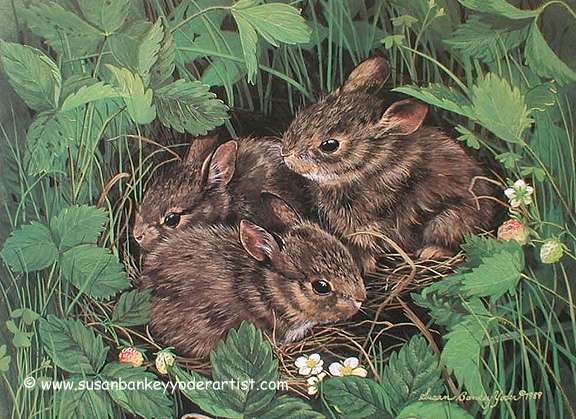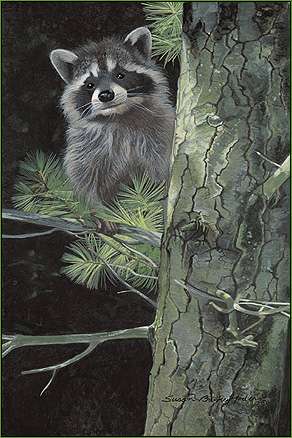
Native American Veterans Honored Today Run Date: 05/26/03 By Peggy Simpson
WeNews correspondent
Native American women who served in the military will be honored for the first time this Memorial Day at the Women in Military Service for America Memorial.

ARLINGTON, Virginia (WOMENSENEWS)--Lori Piestewa, an Army specialist killed in the Iraq war, has already been given an emotional funeral ceremony from her Hopi tribe in Arizona. But today, Memorial Day, she will be honored at the Women in Military Service for America Memorial here at the gateway to Arlington National Cemetery.
Piestewa, a Tuba City, Ariz. native, was one of eight soldiers with the 507th Maintenance Unit ambushed near Nasiriyah, Iraq, on March 23. Hopi Tribal Chairman Wayne Taylor will be paying tribute to her, along with one of the highest ranking Native American women serving today, Brig. Gen. LaRita Aragon of the Oklahoma Air National Guard, who is Cherokee and Choctaw.
In addition to a color guard comprised of Native Americans from across the country, the Cedartree Singers, headed by a Washington-based Cherokee, will sing, with drums. Several Native American tribes will present eagle feathers to the Piestewa family. And the memorial to Piestewa and other Native American women in the military will be blessed in a "smudgeon ceremony" by a Saginaw Chippewa reservation pipe carrier.
The Women in Military Service for America Memorial opened in 1997 on 4.2 acres of National Park Service land at the ceremonial entrance to the country's most famous soldier's graveyard, facing the Arlington Memorial Bridge, the Lincoln Memorial and the memorials to those who died in Vietnam and Korean wars. An existing 33,000 square-foot building was retrofitted for the memorial, which aims to honor the women who have served in the past 220 years and to find out more about them. The Women's Memorial Foundation is collecting artifacts from women in the military and conducting oral history interviews with surviving veterans, to dramatize the saga of women's effort to gain military rank.
Exhibit Underway when Piestewa DiedPreparations for an exhibit of Native American women in the military were well underway at the time Piestewa was killed. With the help of the TriWest Healthcare Alliance, a military health care contractor based in Phoenix, Ariz., the current exhibition was completed--and broadened to include the special tribute to Piestewa.
A uniform belonging to Piestewa will be on display in the exhibit opening on Memorial Day, "Voices: Native American Women in the U.S. Armed Forces."
This is a first-time effort. No similar exhibit has been mounted. And very little is known about Native American military women. Those featured were chosen partly to show their diverse cultural backgrounds: Some grew up on reservations; others were totally removed from that culture until adulthood; still others had footholds in both worlds.
In addition to Piestewa and Aragon, others honored are: Lieutenant Colonel Brenda Finnicum, a Lumbee national who served three stints in the Army Nurse Corps between 1978 and 2000; Iva Good Voice Flute, an Oglala Sioux, an Air Force senior airman from 1991-95; Minnie Spotted Wolf, a Blackfoot private first class with the U.S. Marine Corps Women's Reserve, 1943-45.
Three other women are included in the exhibit to represent three generations of Pueblo and Jicarilla Apache Nations in the military: Evelyn Koteen Archuleta of Dulce, N.M., a Women's Army Corps private from 1945-46; her daughter, Melinda Archuleta Cain of Espanola, N.M., an Army specialist, 1987-1990; and a granddaughter, Melanie Cain, also of Espanola, who was an Air Force airman from 1993 to 1998.
It is not known how many Native American women have served in the military but the founder of the women's military museum, retired Brig. Gen. Wilma Vaught, says it could be as high as 10,000, with 2,700 currently on duty.
Native American Women Fought in Revolutionary WarHistorians at the museum are discovering that Native American women fought with the U.S. military as far back as the American Revolution. For example, an Oneida woman, Tyonajanegen, fought alongside her U.S. Army officer husband at the battle of Oriskany in New York in 1777. Riding horseback withhim into the battle, she loaded his gun after he was shot in the wrist.
The permanent exhibits include photos and a cane used by Dr. Mary Walker, an Ohio surgeon with the Union Army who was captured by Confederate forces in 1864 and held four months at a Virginia prison. She is the only woman to have won a Congressional Medal of Honor for Meritorious Service.
Women formally became part of the U.S. military early last century with the creation of the Army Nurse Corps in 1901 and the Navy Nurse Corps in 1908. During World War I, more than 35,500 women served in war zones, and 422 lost their lives doing so. During World War II, 450,000 women served in the war zones and 470 died, 21 of them killed in action. During the Korean War, 1,000 women were deployed, 16 died, although none in action. In Vietnam, 10,000 women were deployed and eight died, one in action.
A decade ago, in Desert Storm, 41,000 women were deployed. Sixteen died, including Major Marie Rossi, who met her death while piloting a helicopter that was shot down.
An Air Force woman was killed in the 1998 embassy bombing in Nairobi, Kenya; two navy women died on the U.S.S. Cole in the October 2000 attack in Yemen; and eight military women died on duty at the Pentagon, Sept. 11, 2001. This March, Air Force Lt. Tamara Long Archuleta died in Afghanistan when her helicopter crashed during a rescue mission en route to take injured Afghan children to medical care.
How many women served in the Iraq war still isn't clear, says Vaught, but it definitely would be more than those in Desert Storm. And this war has disproved skeptics who questioned whether women had the right stuff to serve in combat.
After Desert Storm, the military lifted most restrictions on occupations open to women. A decade ago, women "were flying tankers, helicopters and cargo aircraft. This time, they were flying combat aircraft as well--both fighters and bombers," Vaught said. "More women were performing combat support duties than in 1990-91 and so more ended up in harm's way."
"Lessons learned" reviews are still underway at the Pentagon, but Vaught says women now are integrated into all aspects of the military, including 151,818 of them in the reserves. "We're at the 'no turning back point.'"
It's not just the renowned remark by POW Jessica Lynch, whose first words when rescued was that she was an Army soldier.
There are also the exploits of fighter pilot Kim Campbell Casey, whose nickname is "Killer Chick." When her A-10 aircraft was shot up on a mission in Iraq, she defied the odds and navigated it back to a safe landing.
"I talked to the chief of staff of the Air Force and he said that what she had done was just awesome," Vaught said. "She had only had 300 hours in that plane but she had spent hours on hours at the simulators, preparing for all the things that could go wrong. Just like what happened."
Peggy Simpson is a veteran reporter recently returned to Washington after a decade in Central-Eastern Europe.
Native American Women with Military Service:
http://www.nativewomenveterans.org/
 Buffaloberries in Autumn
Harriet Peck Taylor
Buffaloberries in Autumn
Harriet Peck Taylor 



















